Simple Machine
Machine
Machine is any device by means of which a force applied at one point can be used to overcome a force at a different point

The applied force is called Effort
The force which effort overcomes is called Load (The force which an object pulls or pushes on a machine is called Load.)
Types of simple machine

Mechanical Advantage (M.A.)
The mechanical advantage of a machine is defined as the ratio of the load to the effort.
Formula for mechanical advantage
Velocity Ratio (V.R.)
The velocity ratio of a machine is defined as the ratio of the distance moved by effort to the distance moved by the load in the same time.
Formula for Velocity Ratio (V.R.)
Efficiency
The efficiency of a machine is defined as the ratio of the useful work done by the machine to the total work put into the machine.
Formula for Efficiency
Example 1
Calculate the mechanical advantage of the diagrams below.
1.
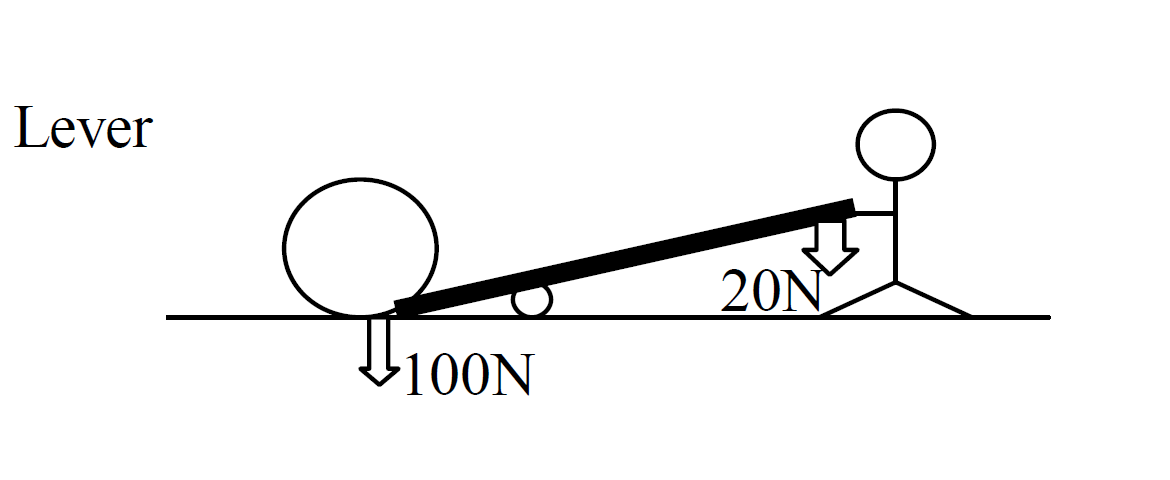
Solution
given that
Load = 100N
Effort = 20N
M.A = ?
Answer:
2.
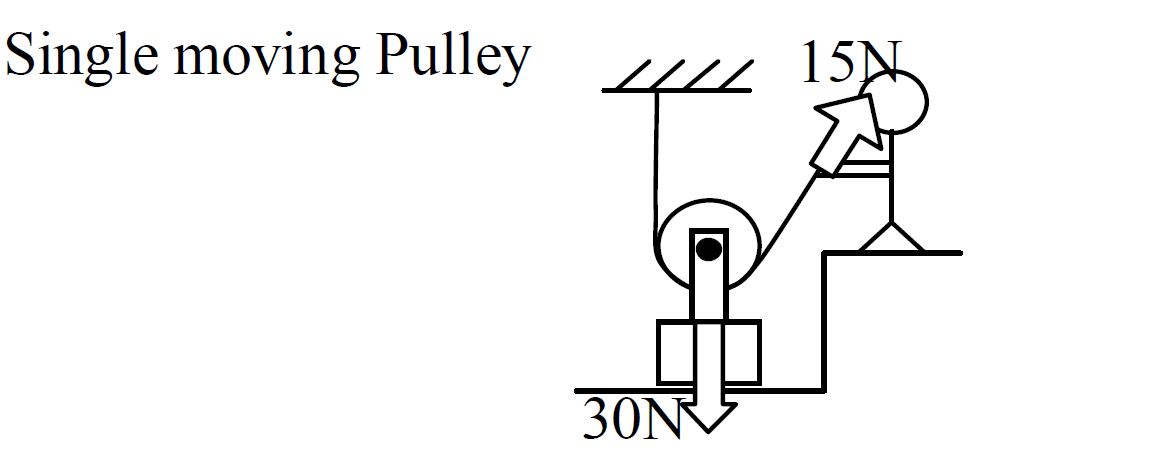
Solution
given that
Load = 30N
Effort = 15N
M.A = ?
Answer:
3.
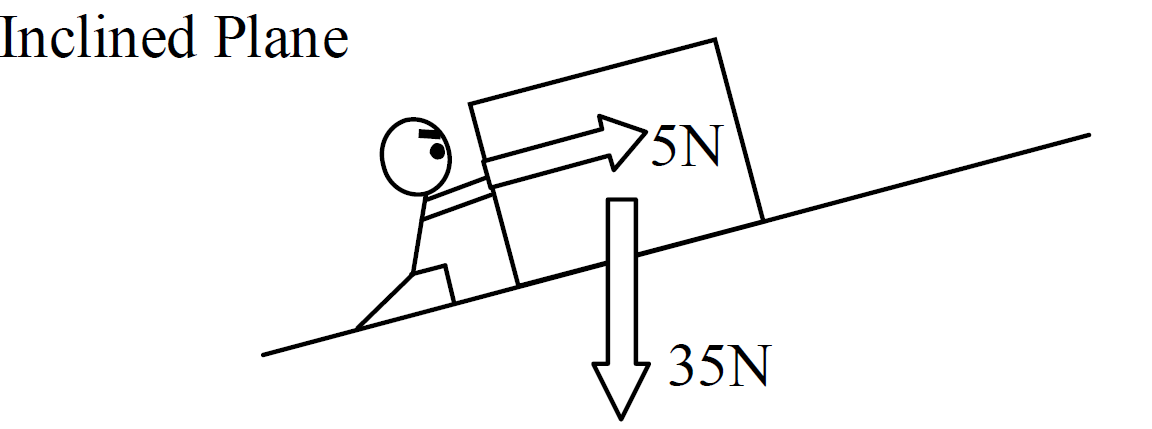
Solution
given that
Load = 35N
Effort = 5N
M.A = ?
Answer:
Example 2
Calculate the velocity ratio of the diagrams below.
1.
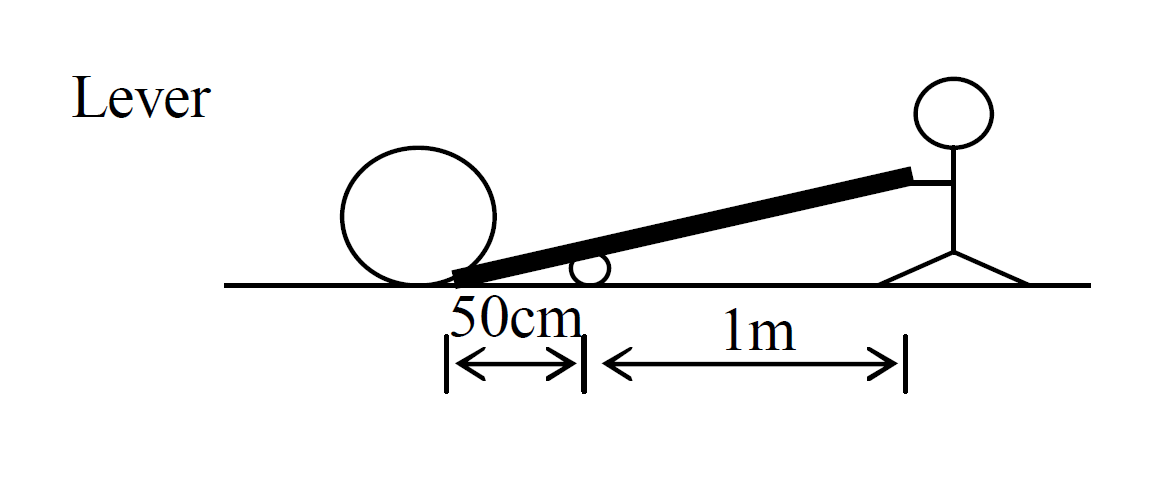
Solution
Given that
dE = 1m
dL = 50cm
V.R = ?
First convert 50cm to metres(m)
dL = 0.5m
Answer:
Example 3
The diagram below shows a pulley system. An effort of 1000N is required to raise a load of 4500N.
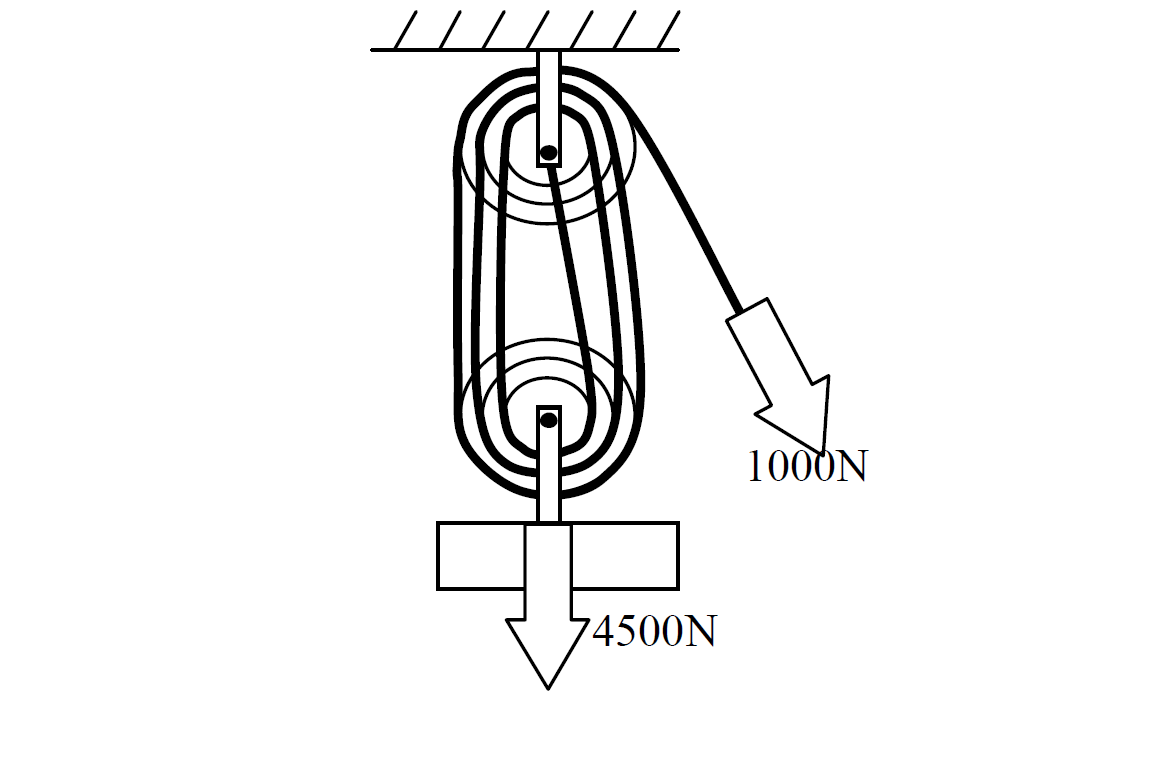
(a) Find the mechanical advantage.
(b) Find the velocity ratio.
(c) Find the efficiency.
Solution
(a)
Given that
M.A = ?
load = 4500N
Effort = 1000N
Answer:
(b)
To find the velocity ratio of the pulley system, count the number of lines connected to moving pulley.
Therefore 6 lines connected to moving pulleys.
Answer: V.R. = 6
(c)
Efficiency = ?
M.A = 4.5
V.R = 6
Answer: